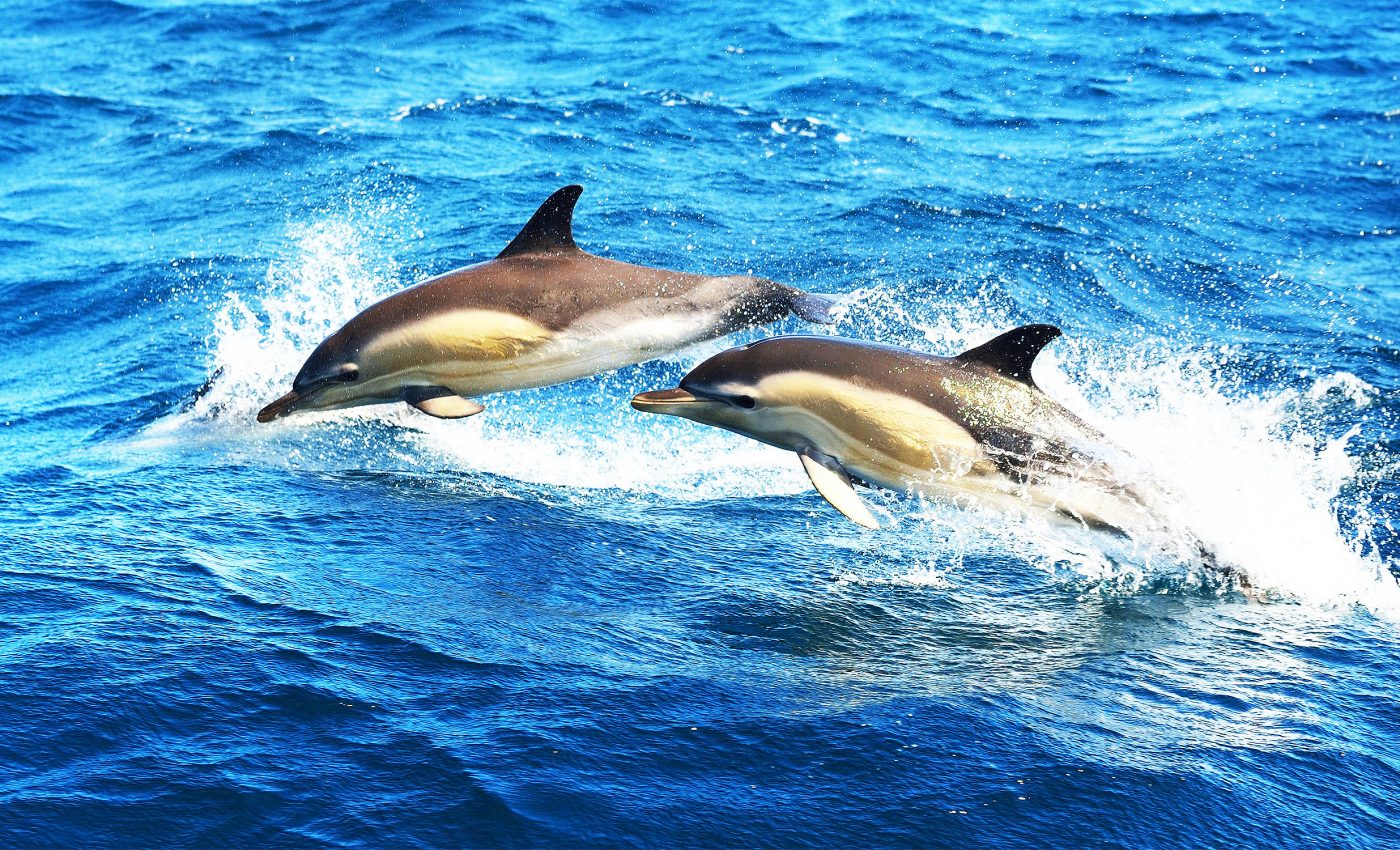
Military sonar does a lot more damage to dolphins than previously disclosed
We’ve known for a long time that military sonar, widely used for submarine detection and naval operations, can have devastating effects on dolphin populations. Now, however, researchers are learning that sonar is more harmful to dolphins than previously believed.
Scientists from UC Santa Cruz and their collaborators have achieved something monumental — they’ve managed to directly measure the behavioral responses of these dolphins and unraveled some surprising findings.
Sonar sound surprise
In a recent study, the international team sampled dozens of dolphin groups. They simulated and activated operational military sonars in controlled conditions, and then keenly observed how these dolphins reacted.
“We see clear evidence of acoustic responses — fine-scale changes in movement including directed, sustained, strong avoidance, and changes in group configurations,” said lead author Brandon Southall, a UC Santa Cruz research associate and senior scientist at Southall Environmental Associates (SEA).
Dolphins reaction to sonars
To observe these fast and playful creatures, the scientists had to employ advanced methods and technologies. They utilized aerial drone imagery, underwater listening devices, and even shore-based visual observatories.
John Durban, a co-author of the study and a senior scientist at SEA, explained how they further developed drone photogrammetry.
“In this study, we have been able to further develop this technique to geolocate dolphins with centimeter-level precision, enabling changes in behavior to be quantified in an objective way,” noted Durban.
This combination of methodologies created a comprehensive picture of how these dolphins, renowned for their sociability, respond to sonic disturbances.
“While these behavioral changes occur and persist on variable time scales, they are surprising in that they collectively demonstrate responses at sound levels that are orders of magnitude lower than predicted in current regulatory impact assessments. These animals are clearly much more sensitive to noise exposure than we thought,” Southall explained.
Impacts of sonar on dolphins
These social dolphins, often seen in groups that could range into the hundreds or even thousands, regularly come across potent military sonar systems.
Worryingly, these systems are known to disturb, harm, and even kill other species. The study proposes that millions of animals might be impacted annually, despite past assessments predicting otherwise.
The findings of this study have profound implications for marine conservation efforts, particularly regarding human-induced noise pollution.
With the revelation that dolphins are more susceptible to sonar disturbances than previously assumed, there is an urgent call for reevaluating current naval practices.
This knowledge urges policymakers and environmentalists to integrate more stringent regulations on sonar usage, ensuring the preservation of marine life integrity.
By aligning scientific insights with conservation policy, there is a potential to mitigate some of the anthropogenic impacts on these intelligent creatures.
Future research
The research team emphasizes the need for continued investigations into the long-term impacts of noise exposure on dolphins and their ecosystems.
Future studies could expand to include a broader range of species and environmental scenarios, ultimately enriching our understanding of marine acoustic ecology.
The deployment of novel technologies, as demonstrated in this study, provides a promising pathway for comprehensive, non-invasive monitoring of marine life.
Broader environmental impacts
This study focuses on dolphins, but its findings are important for all marine life.
Military sonar and other human-made noises impact many species, messing with their behaviors, habitats, and ways of communicating.
By showing how vulnerable dolphins are to these disturbances, it highlights the urgent need for better protection of our oceans.
We must take a holistic approach to ocean conservation, recognizing the complex relationships within marine ecosystems and working to reduce human stressors.
Protecting ocean biodiversity is vital not just for marine species, but for the health of our planet, too.
Increased concerns on sonars and dolphins
In recent times, the rising number of mass strandings of cetaceans coinciding with the operation of naval sonar systems has flagged concern regarding the potential threats posed by noise exposure.
“Understanding how these animals respond to these types of acoustic signals is important for mitigating the impacts that this type of disturbance can have on social animals that rely on acoustics for communication, feeding, and other critical facets of their lives,” said study co-author Caroline Casey, a researcher at UC Santa Cruz.
By advancing research in this field, scientists aim to promote deeper insights into interspecies interactions and ecological resilience, paving the way towards more informed and effective environmental stewardship.
So, the next time you think about dolphins, remember the other side of their story — the one that we humans play a part in. What can we do to ensure their environment remains safe? Let’s mull over that for a bit. After all, isn’t awareness the first step towards change?
—–
The team also included Ari Friedlaender, a professor of ocean sciences at UC Santa Cruz, and a number of collaborators from institutions in the United States and the Netherlands.
The study is published in the journal Royal Society Open Science.
—–
Like what you read? Subscribe to our newsletter for engaging articles, exclusive content, and the latest updates.
Check us out on EarthSnap, a free app brought to you by Eric Ralls and Earth.com.
—–













